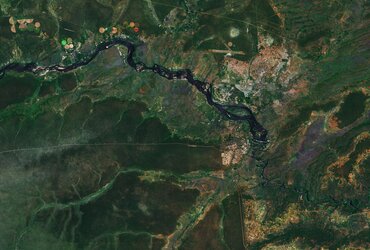

Water drop under shifting hypergravity levels
A water drop seen at various different hypergravity levels (1.8, 5, 9, 13, 19.1 G). The ‘HyperDrop’ team from the Université Libre de Bruxelles in Belgium and Politecnico de Milano in Italy has used the LDC to investigate how liquid droplets on a solid surface change shape as gravity shifts. It represents fairly fundamental research, but also has some practical applications: spraying droplets onto surfaces is widely used in industry for cooling.
The team used spin coating and spray coating where each polymer surface was deposited on a plain glass disk. For spin coating, the polymer solution (Teflon) on the substrate was rotated at very a high speed, and the fluid was spread by centrifugal force. Accordingly, surface obtained from spin coating usually has a very small surface roughness. While for spray coating, the polymer was sprayed onto the substrate without any spread force. Therefore, compared with spin coating, sprayed surface can have a larger roughness. The 0.011 ml indicate the volume of the drop estimated through a numerical code (based on the assumption of axial-symmetry).
A water drop seen at various different hypergravity levels (1.8, 5, 9, 13, 19.1 G) - Teflon Spin, Volume = 0.011ml.





